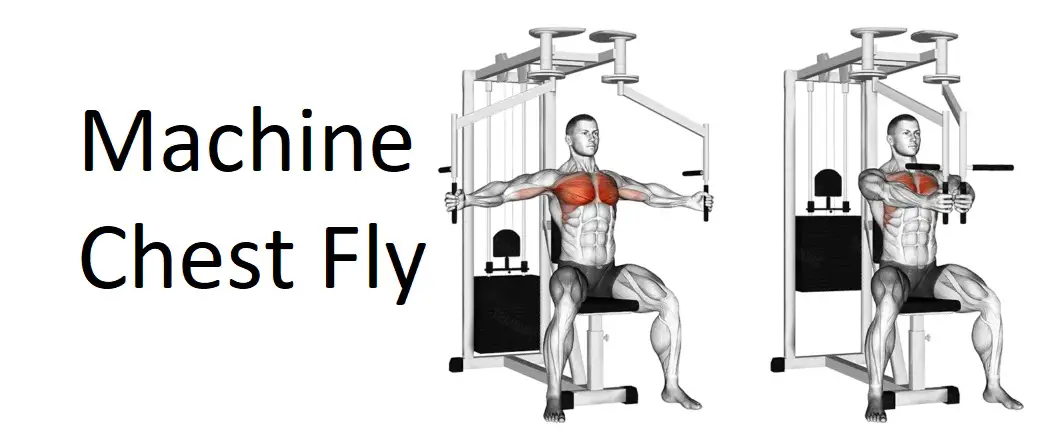The Machine Chest Fly is a popular resistance exercise that targets the chest muscles (pectoralis major) while providing a controlled and guided movement pattern. Using a chest fly machine, this exercise allows for isolation of the chest muscles and provides a safe and effective option for individuals looking to build chest strength and definition. In this comprehensive guide, discover the correct technique, benefits, alternatives, and other details related to the Machine Chest Fly.
Instructions for Machine Chest Fly
Setup:
- Adjustment: Set the seat height and handle position on the chest fly machine according to your comfort and range of motion.
- Position: Sit on the machine with your back flat against the backrest and your feet firmly planted on the ground.
- Grip: Grasp the handles with an overhand grip, palms facing inward, and elbows slightly bent.
Execution:
- Contraction Phase: Exhale as you bring the handles together in front of your chest, focusing on squeezing your chest muscles.
- Stretch Phase: Inhale as you slowly return the handles to the starting position, maintaining control throughout the movement.
- Repeat: Perform the desired number of repetitions, focusing on maintaining proper form and control.
Tips:
- Keep your core engaged and your back flat against the backrest throughout the exercise.
- Avoid arching your back or using momentum to move the handles, as this can reduce the effectiveness of the exercise.
- Adjust the machine settings or weight load to match your strength and fitness level.
Benefits
- Isolation of Chest Muscles: The Machine Chest Fly isolates the chest muscles, specifically targeting the pectoralis major, leading to improved muscle definition and development.
- Controlled Movement: Using a chest fly machine provides a guided movement pattern, reducing the risk of injury and allowing for precise targeting of the chest muscles.
- Muscle Hypertrophy: Performing the Machine Chest Fly with moderate to heavy resistance can stimulate muscle growth and hypertrophy in the chest muscles, contributing to increased strength and size.
- Joint-Friendly: Unlike free weight exercises, the machine provides support and stability, making it a suitable option for individuals with joint issues or mobility limitations.
- Variety of Angles: Many chest fly machines allow for adjustments in seat position and handle angles, allowing you to target different areas of the chest for optimal muscle development.
Alternatives
To add variety to your chest workout routine, consider these alternative exercises:
- Dumbbell Chest Fly: Targets the chest muscles with free weights, providing a greater range of motion and requiring more stabilization.
- Cable Chest Fly: Utilizes a cable machine with adjustable pulleys to perform chest fly movements, providing constant tension on the chest muscles throughout the exercise.
- Push-Up: A bodyweight exercise that targets the chest, shoulders, and triceps, providing a challenging and effective option for chest development.
- Bench Press: Targets the chest muscles with a barbell or dumbbells, providing a compound movement that also engages the shoulders and triceps.
- Pec Deck Machine: Similar to the Machine Chest Fly, the Pec Deck Machine allows for isolation of the chest muscles while providing support and stability.
Conclusion
Incorporating the Machine Chest Fly into your chest workout routine offers a safe and effective option for targeting the chest muscles and promoting muscle growth and development. Focus on proper form, gradually increase resistance, and tailor your routine to suit your fitness goals and preferences.








